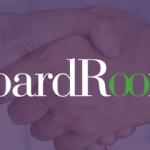This article is published on Succession Plus’ Content Hub.
Founder of Succession Plus, Craig West, was joined by a group of mid-market business owners recently for a virtual Q and A session. During the session, Craig:
- Provided an overview of Employee Share Ownership Plans (ESOP) and why they work in mid-market business.
- Covered the Ladder to Equity model – the model of how you can process employees from income through to equity.
- Explained Ownership Mindset – what can be done to get employees to be more ‘ownership focused’.
After the presentation, Craig opened it up to questions, so let’s go over the answers to those questions from those who were in attendance at the session.
Q: How does Succession Plus value a business (valuation formula) and what makes a business valuable?
A: Like most assets, there are two components: risk and return. The return in a privately held business is typically profit, and we need to look at what is the profit and what is a realistic ongoing, sustainable profit model for the business to have. The second is risk, and in all assets, whether its property or share market or privately-owned businesses, there will always be risk. We need to look at what is causing trouble or concern, and we need to figure out how we manage that risk going forward to make sure we are getting the best possible outcome for business owners. So that valuation combination is around how we calculate the risk versus return, and this is what gives us the multiple which is then used to value the business. The multiple is largely about risk.
Q: What is the typical cost to implement an Employee Share Plan?
A: They can be anything from $8,000 to $30,000. $8,000 is typically for the cost to implement a start-up plan, where you’ve got the startup ESOP with a standard set of rules and are quick and easy to implement. If you require a more complex plan, with different departments and multiple offices, we need to think about how we value the business and make sure the design of the plan is right so we can match the content correctly so we match the outcomes that the owner and employees are looking for. For these more complex plans, it is generally a 3 to 4-month process and can cost between $20,000 and $25,000 to implement.
Q: What would be the starting point for someone considering an ESOP?
A: The starting point is always a valuation, upfront we call this the Business Insights report. You also need to understand where you’re starting from:
- What does the business look like?
- How many employees?
- What percentage of equity to sell down?
- Who will take over running the business?
- How you’d implement the share plan over time?
We need to understand what we are dealing with: the financials, and then a non-financial analysis.
Q: What happens if the major shareholder dies?
A: There is a risk if something happens to the founding shareholder. If they are to pass away, there is a shareholders agreement that needs to factor in unplanned events. For instance, what if someone is hit by a bus or what if someone isn’t able to work anymore. This is often documented in the agreement and stipulates what happens and typically this would be funded by insurance. This is because it is unlikely that all other shareholders will be able to fund buying the deceased shareholders share of the business right away without any external funding.
Q: Is there a guideline of what business would be too small to implement an ESOP?
A: Succession Plus have at least 6 or 7 plans in businesses with just one employee, where you’ve got at least one employee that you want to lock into the business for retaining and rewarding. The important thing to consider about the employee share plan is that we can add employees to the plan as well, continually adding employees as time passes.
Q: Is there a guideline of what business would be too small to implement an ESOP?
A: Succession Plus have at least 6 or 7 plans in businesses with just one employee, where you’ve got at least one employee that you want to lock into the business for retaining and rewarding. The important thing to consider about the employee share plan is that we can add employees to the plan as well, continually adding employees as time passes.
Q: How is the employee share plan managed on an ongoing basis?
A: For ongoing management of the employee share plan there are two key parts. The corporate governance structure, a board structure with an external third party director to build up structures, advise the business and provide some accountability. Secondly, the administration, which includes the accounting, managing compliance, managing employees joining and leaving the plan and yearly valuation of the business for taxation.
This article is prepared by Succession Plus. Click here to view the article or visit their website. Contact Succession Plus here for more information or email your questions directly to Craig at cwest@successionplus.com.au.





